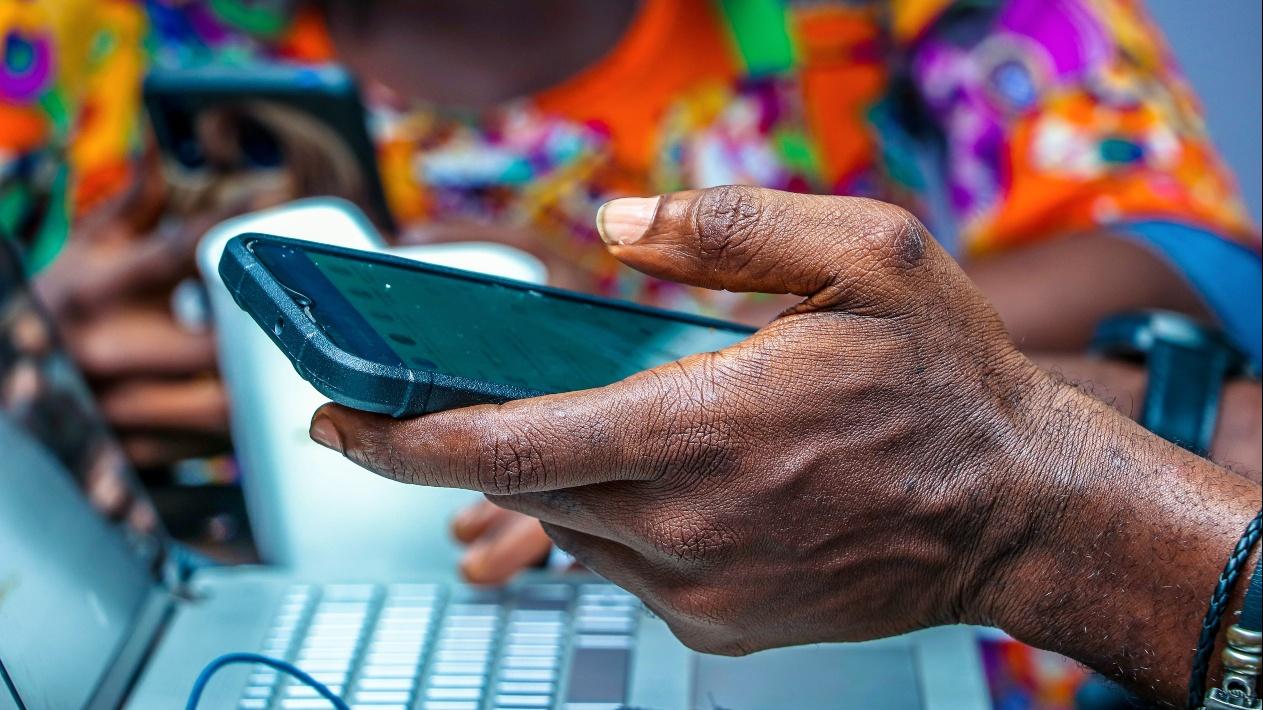During a photography project documenting a refugee settlement in Uganda, fears of occult forces among local communities led to the perceived threat of the project to people’s safety. Charles Ogeno reflects on this challenge, describing how registers of threat can intersect with efforts to represent refugee populations through visual media.
This article is based on research at the Safety of Strangers project at the LSE Firoz Lalji Institute for Africa.
In March 2022, I was involved in a photo-based research project that offered refugees the chance to share their stories through photography. Designed to be participatory alongside LSE’s Ryan O’Byrne, we recruited and trained 12 refugee photographers to take photos within their communities. Following local advice that digital cameras might make community members envious, and to lower costs on a budget, we provided the photographers with old fashioned disposable film cameras, which we would collect after two weeks and take to the UK for processing (Uganda no longer has film processing facilities). We would then return the photos to the photographers.
The photographs were intended to visually encapsulate the difficulties faced by South Sudanese individuals and communities resident in Palabek Refugee settlement, northern Uganda. In addition, photographers were asked to reflect on the thinking and processes behind each image. Our intentions were to share the images with communities for further reflection.
Often, researchers tell the stories of refugees living in settlements such as Palebek. We intended to reverse the gaze and give refugees the chance to tell their own stories, through invoking the representations of their choice. We also intended to construct a meaningful dialogue around the images, using them as a basis for subsequent communal discussion.
Yet, in this process, we were forced to re-examine our hopes for participation among the communities, when the photographic methods were equated with occult power. Specifically, the communities feared that the photos that featured in the research would be taken underwater.
Fears of going underwater
Scholars have noted the prevalence of fears of “underwater” powers across the Uganda-South Sudan borderlands. As in many other parts of Africa, there is a widespread belief that people can gain satanic power from the evil world residents of an underwater Kingdom. In Palabek, many believe that underwater agents appease the evil spirit by offering human beings as sacrifice, and the devil rewards them with wealth, which puts the agents of underwater above other members in the community. Idioms vary, but it is commonly articulated that power is gleaned through engaging with “underwater” agents living among the community. Such agents are thought to trade the bodies or souls of people for money or other worldly success. Once the trade has been made, the sacrificed individual will be transported to an underwater kingdom, where they lose all personal ties with people and the human community.
In effect, going underwater dislocates a person from their kin and worldly existence. Prior to this, it is believed that the person being sacrificed exhibits particular symptoms, including diseases that cannot be cured.
Though the exact notions of the underworld are flexible, and acquire locally specific dimensions, fears of sacrifice in different forms have been documented across the border. During the colonial era, ethnographers noted the presence of evil spirits taking on particular humanoid forms. In the post-independence era, Christian evangelism has served to embolden fears of sacrifice, equating their wealthy human interlocutors with devil worship. Simultaneously, as argued by anthropologists since the 1990s, idioms have related to the inequalities of neoliberal capitalism. In the wake of extreme inequalities that have emerged across urban and rural African societies, idioms of witchcraft, which seek to make sense of want amidst personalised prosperity, seem to make sense. In the region, witchcraft accusations then serve as a boundary-making force, amidst a backdrop of cross-border and rapid social change.
While external observers may find this exotic, what matters is not the trust of an underwater kingdom but the functions of such beliefs. In the context of the photography project, we were confronted by beliefs that had very real social effects.
Drawing on research using “photo-voice” methods elsewhere, we thought the photo-based research would be an ethical and effective way for refugee communities (or representatives from them) to voice their own lived experiences. These are communities where many are tired of NGO workers and researchers asking people to rehearse trauma. Yet, unfortunately, the film cameras we distributed among our designated photographers appeared to be strange to community members. Our approach, though well-meaning, fostered suspicion in Palabek. Indeed, many refused to interact with the photographers, fearing their photos could be sold or taken underwater and they could go underwater themselves.
Research activities and the dynamism of witchcraft
Research by Hastings exposes how public health programmes in Morogoro, Tanzania, which administered drugs for schistosomiasis without parental consent, fostered fears of extractive witchcraft which led to riots. Much before this, Harrell-Bond noted how her research in displacement camps South Sudan during the mid-1980s led her to encounter poison agents. In this way, the presence of external actors in health crises in conflict zones has been shown to ignite occult fears. While there have been attempts to explain violent resistance to public health or the evictions of poisoners, there has been less focus on the more subtle ways in which research encounters interact with occult fears.
The photo project took place in a wider context where individual prosperity was often regarded with suspicion. The inequalities generated by the process connected to feelings of envy that someone might get richer through selling those photos. People within communities questioned the actions of photographers, asking how the photo-based research method was carried out. Why and where will the photos be taken?
By refusing to partake in the project, an individual expressed an action to protect themselves. Specifically, non-participation means that an individual could not be sold as part of a satanic business agreement and would not be taken underwater. The uniqueness of the camera placed our photographers outside the usual social status of the surrounding refugee population.
According to local opinion, this outsider status needed to be controlled. While people partook in spreading underwater explanations to different extents, refusing to collaborate provided a resistance to the promotion of some community members as photographers. At the same time, communities would not give the photographers a chance to make money from someone else’s image. This analysis fits with wider insights that present witchcraft accusations as a levelling force within rural communities: limiting social and economic mobility at the same time as it protects the fearful individual.
Underwater accusations are a form of collective mistrust made to ensure that community members avoid overly wealthy and powerful individuals. Once someone is suspected of engaging in underwater activities, they are isolated through stories community members share about their suspicions, and the chance of that person gaining more power, wealth and prestige within the community is reduced.
Acknowledging the occult in methodological approaches
When the underwater concern was raised, we realised it was important to understand ontological threats not usually covered in the research ethics process. We endeavoured to build in mechanisms to reassure participants, while still allowing the project – which received much enthusiasm from members of Palabek – to function. For example, among the peer-photographers, we emphasised the importance of seeking consent and respecting subjects’ decisions to be photographed, or not. We supported our photographers with necessary documents and equipment, as well as formal introduction letters.
More importantly, photographers were clearly informed that the photos will remain their own property and they can choose to give them to their subjects. We gave both our photographers and subjects full authority over the photos and tried to make them understand that we, the external researchers, do not. We hoped that giving this authority and freedom to our photographers and their subjects might build trust.
Moving forward, I would recommend using digital cameras that the current generation living in the settlements recognise. This would mean both photographers and subjects have immediate access to their photos to build trust in the process.
Funding for the writing of this research was provided through the AHRC/ DFID funded project Safety of Strangers: Understanding the Realities of Humanitarian Protection (AH/T007524).
Photo: Martha receives a bag of food at an Oxfam distribution. Credit: Pablo Tosco/Oxfam. Licensed under CC BY-NC-ND 2.0.






Wonderful piece, good job !!
This is very interesting article.